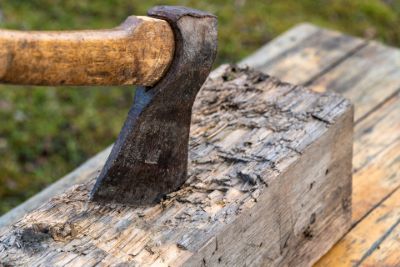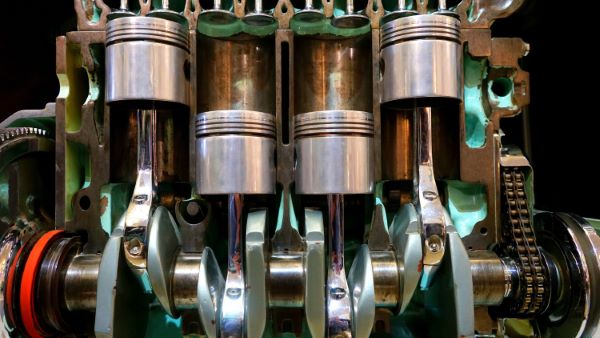Forging and casting are two of many ways to make metal parts. Whether you’re doing this, or welding, or machining, each method has its own pros and cons.
Casting is a method in which metal is heated up until molten and poured into a mould to give it its shape.
Forging is done while the metal is just a bit under the melting temperature, meaning that you’re working with a solid instead of a liquid. It’s just much softer at high temperature. This allows you to hammer or squash it into shape.
Here’s an explanation of the differences between these processes.
Table of Contents
Forging
Forging metal makes it stronger. Unlike other processes, forging allows you to contour and control the grain direction and size in the metal. This lets you control directional stiffness and strength in your parts.
Forging is a common method in which the metal (most commonly steel) is heated up and then shaped using upper and lower dies.
At the most basic level, this can be done with just a hammer and an anvil (or Anvil Shaped Object). In production settings, this is more commonly done with pre-made dies that are in the shape of the part that’s being produced.

There are two types of dies: open dies and closed dies. Open dies only contact two areas of the workpiece, like with a hammer/anvil or a top and bottom die on a press. Closed dies are made to completely encapsulate the part and are generally intended to form the workpiece with a single hit.
Advantages of Forging
Every process has its pros and cons. Here are a few of the ways that forging could be the method of choice for making some metal parts.
Because the grain flow is maintained and the ends of the grain aren’t exposed (like they are in cutting), forging a steel piece can make it more durable.
The simplest way to explain it is to think of the example of wood. It’s really not hard to crack or break wood in the direction of the grain. On the other hand, wood can take a lot of abuse when the force is applied against the grain.

Now applying this to metal, think of a forging like a solid wood, and a casting as particle board. Particle board is perfectly fine for compressive load, but isn’t too strong otherwise.
Grain direction is far more noticeable in wood than it is in metal. Even still, it does make a really difference. Forged parts with a good grain structure are just way stronger and less likely to crack.
Another benefit to forging is that the heat and pressure can be a great way to work out any defects in the material, like gas pockets (porosity). Between that and the thermal cycling that happens as the part cools and is reheated, you can get some really great quality metal out of this process.
Of course, anything can be screwed up. If you’re forging by hand in your yard, you might hammer the metal when it’s too cool and end up fracturing it. No process is foolproof.
In general, though, you get really good quality metal through forging. Parts are typically more impact-resistant, tougher, and more reliable.
Disadvantages of Forging
Forging definitely has its limitations. For example, complex parts could be totally impractical for this process.
You can definitely make some parts that look complex from the outside, but forging is generally not a great process when there’s internal cavities or other similar types of features.
The most straightforward types of parts to forge are ones that can be slammed between two dies and be done. If there are any inaccessible overhangs or delicate features, then forging quickly becomes less practical.
Another disadvantage is that the dies used in industrial forging can be really expensive and take a long time to make, especially if the forged part is more complicated. Dies are usually made out of a particular kind of tool steel, which requires rough machining, heat treating, and finishing before it’s ready for use.
You’ll also need a hammer or press strong enough to move the steel, so most shops have an upper limit of around 100 lbs for forged parts unless they’re very basic shapes like shafts, blocks or rings.
Essentially, forging is more expensive and it’s harder to make certain shapes with it.
Casting
Advantages of Casting
While forging will give you stronger parts, there are a lot of reasons why casting might be the method of choice.
For one, casting is generally much cheaper. Instead of complicated dies, you can make simpler moulds. These can be made from a number of materials, but sand is a common and cheap one.
Another perk of casting is that you can make much more complicated shapes. With forging, you have to have access to hit the metal. With casting, though, you have much more design freedom. Just compare a combination wrench (forged) to an exhaust manifold (cast).

Casting is a great solution for parts with internal cavities, which are usually challenging to make by other means. With casting techniques like the lost wax/lost foam methods, there are few shapes that you can’t make with casting. You just might not get the accuracy or consistency that you want.
Casting is also an easy way to tweak the composition of metal on the fly. It’s really simple to toss some alloying elements in the mix to get the material properties that you’re after. With forging, you work with the grade of steel that you got.
Disadvantages of Casting
With casting, gas bubbles that cause porosity can make the metal inconsistent or unreliable. All castings will have a certain amount of porosity; it’s just the nature of the process.
This is why castings tend to crack under impact or non-compressive forces. All of these pores in the metal are points at which cracks can start and quickly propagate.
Additives to the molten metal can help reduce it, but you’ll never totally eliminate it.
These additives can bring on challenges later on, too. For example, silicon is often added to remove oxygen from molten metal, and the content can be as high as 1% of the metal mix.
The downstream effects of doing this can be seen if you need to machine the parts later. Silicon is really abrasive to cutting tools, so they break down more quickly. It’s also harder to get a good surface finish on materials with a high silicon content.
Compare this to forging. While there will still be a small amount of silicon in the metal, forging makes use of pressure to mitigate the effects of oxygen or other gases in the metal mix. You don’t need to add elements to the metal like you do with casting, giving you more control over the end material.
No matter what, you’ll always have significantly more defects within the metal with casting. They can generally handle compressive forces well enough, but they’ll always be inferior if you need something that will handle wear and impact well.

